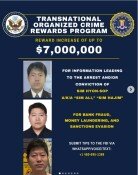Hyundai`s on-ship casino idea is intolerable
Hyundai`s on-ship casino idea is intolerable
Posted April. 16, 2001 13:02,
Hyundai`s ongoing Mt. Kumgang tourism program ran into great trouble. Hyundai Merchant Marine is known to have notified Hyundai Asan Corp. of its decision to abandon the cruise service last week. The merchant marine firm played roles of leasing of the cruise ships and their operation, marketing for tourists and other key business in connection with the inter-Korean tourist venture. Although Hyundai Asan insisted that the Mt. Kumgang tourism project should be continued, it has become highly difficult for its affiliate merchant company to sustain its business without some extraordinary measures, as the firm already has exhausted the paid-in capital of 450 billion won.
The point at issue is the enormous deficit. Hyundai Group has injected a total of US$638 million or 800 billion won in the cruise tourism project, involving facility investments, cruise ship rental fees, Mt. Kumgang entrance fees and other outlays. Hyundai Merchant Marine alone incurred 87.6 billion won in losses last year, and moreover it is currently running into deficits of about 200 million won per month mainly due to a decrease in the number of customers.
As a matter of fact, the Mt. Kumgang tourism program is a symbolic project for inter-Korean reconciliation and cooperation. Therefore, there is little objection that the project should be continued. Whatever good purposes the program might have, it is not justifiable in that under a capitalist economy a private enterprise is not obliged to sustain a project that causes 200 million won in deficit per month.
Now that two years and five months have elapsed since the Mt. Kumgang project was launched, it is necessary to make an overall review of the business and work out viable measures, if the project is judged to be continued.
First of all, it is urgent to renegotiate with North Korea on the unfavorable business terms. If the contract provision calling for Hyundai`s monthly payment of US$12 million to the North irrespective of the number of tourists is kept intact, the deficits will snowball continuously. A revision is in order to pay mountain entrance fees according to the number of tourists. At the same time, the two Koreas need to reach an agreement to open land routes for the tourists to reach the scenic mountains at lower cost than a cruise ship.
As means of resuscitating the debt-ridden project, some quarters proposed that the government should consider allowing Hyundai to run casinos on the cruise ships or in the on-sea hotels. But we hold the view that any type of casinos must not be permitted. This is because the measure not only could trigger various negative impacts on society but also runs counter to the original goal of the inter-Korean venture.
The Mt. Kumgang program is aimed at enlarging the area of inter-Korean reconciliation but not gambling. The casino business might improve the income structure for the enterprise to some extent, but it is not compatible with the national sentiment that the inter-Korean tourism program is sustained with the money earned by running casinos.







